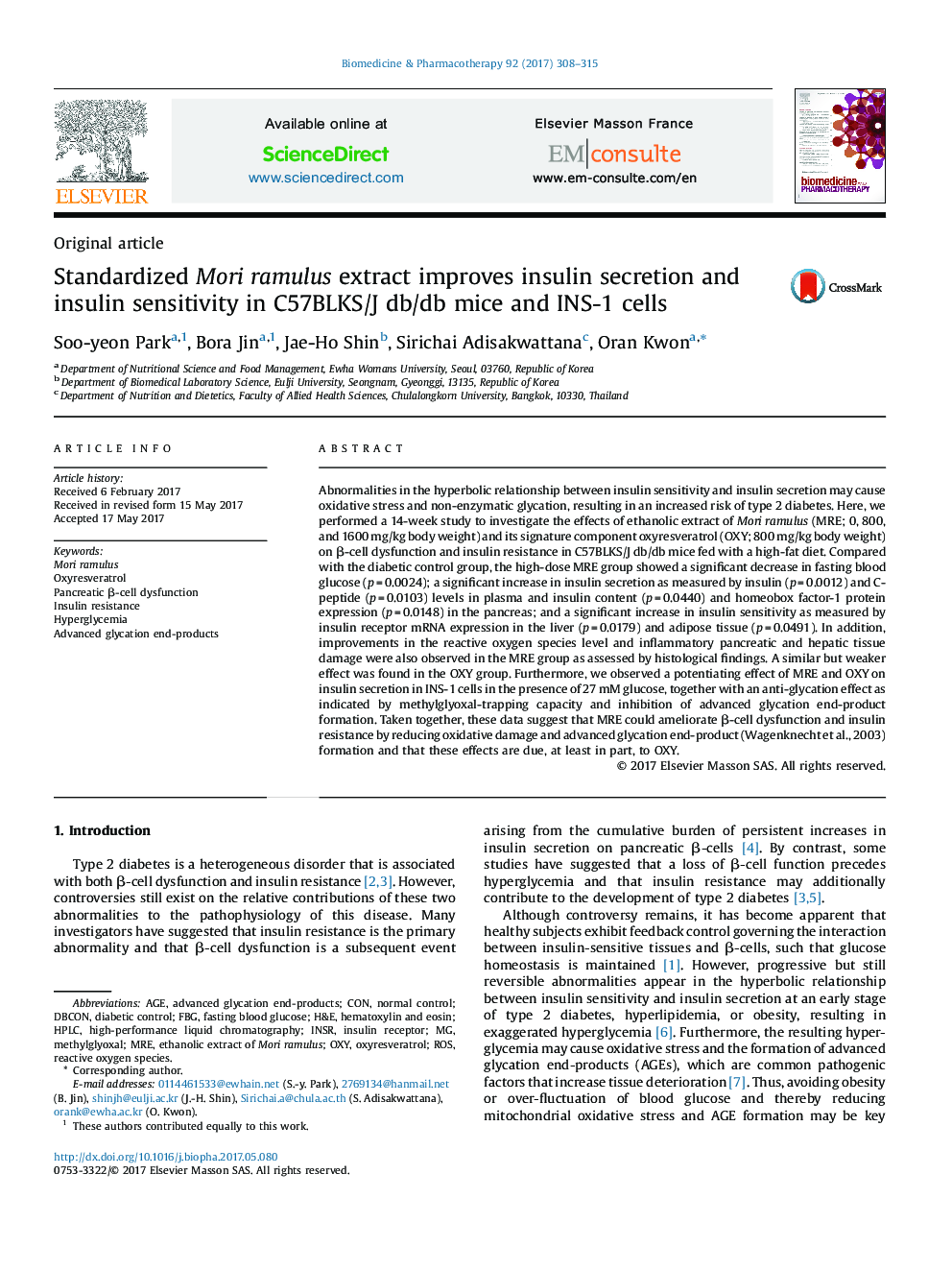| Article ID | Journal | Published Year | Pages | File Type |
|---|---|---|---|---|
| 5552742 | Biomedicine & Pharmacotherapy | 2017 | 8 Pages |
Abnormalities in the hyperbolic relationship between insulin sensitivity and insulin secretion may cause oxidative stress and non-enzymatic glycation, resulting in an increased risk of type 2 diabetes. Here, we performed a 14-week study to investigate the effects of ethanolic extract of Mori ramulus (MRE; 0, 800, and 1600 mg/kg body weight) and its signature component oxyresveratrol (OXY; 800 mg/kg body weight) on β-cell dysfunction and insulin resistance in C57BLKS/J db/db mice fed with a high-fat diet. Compared with the diabetic control group, the high-dose MRE group showed a significant decrease in fasting blood glucose (p = 0.0024); a significant increase in insulin secretion as measured by insulin (p = 0.0012) and C-peptide (p = 0.0103) levels in plasma and insulin content (p = 0.0440) and homeobox factor-1 protein expression (p = 0.0148) in the pancreas; and a significant increase in insulin sensitivity as measured by insulin receptor mRNA expression in the liver (p = 0.0179) and adipose tissue (p = 0.0491). In addition, improvements in the reactive oxygen species level and inflammatory pancreatic and hepatic tissue damage were also observed in the MRE group as assessed by histological findings. A similar but weaker effect was found in the OXY group. Furthermore, we observed a potentiating effect of MRE and OXY on insulin secretion in INS-1 cells in the presence of 27 mM glucose, together with an anti-glycation effect as indicated by methylglyoxal-trapping capacity and inhibition of advanced glycation end-product formation. Taken together, these data suggest that MRE could ameliorate β-cell dysfunction and insulin resistance by reducing oxidative damage and advanced glycation end-product (Wagenknecht et al., 2003) formation and that these effects are due, at least in part, to OXY.
